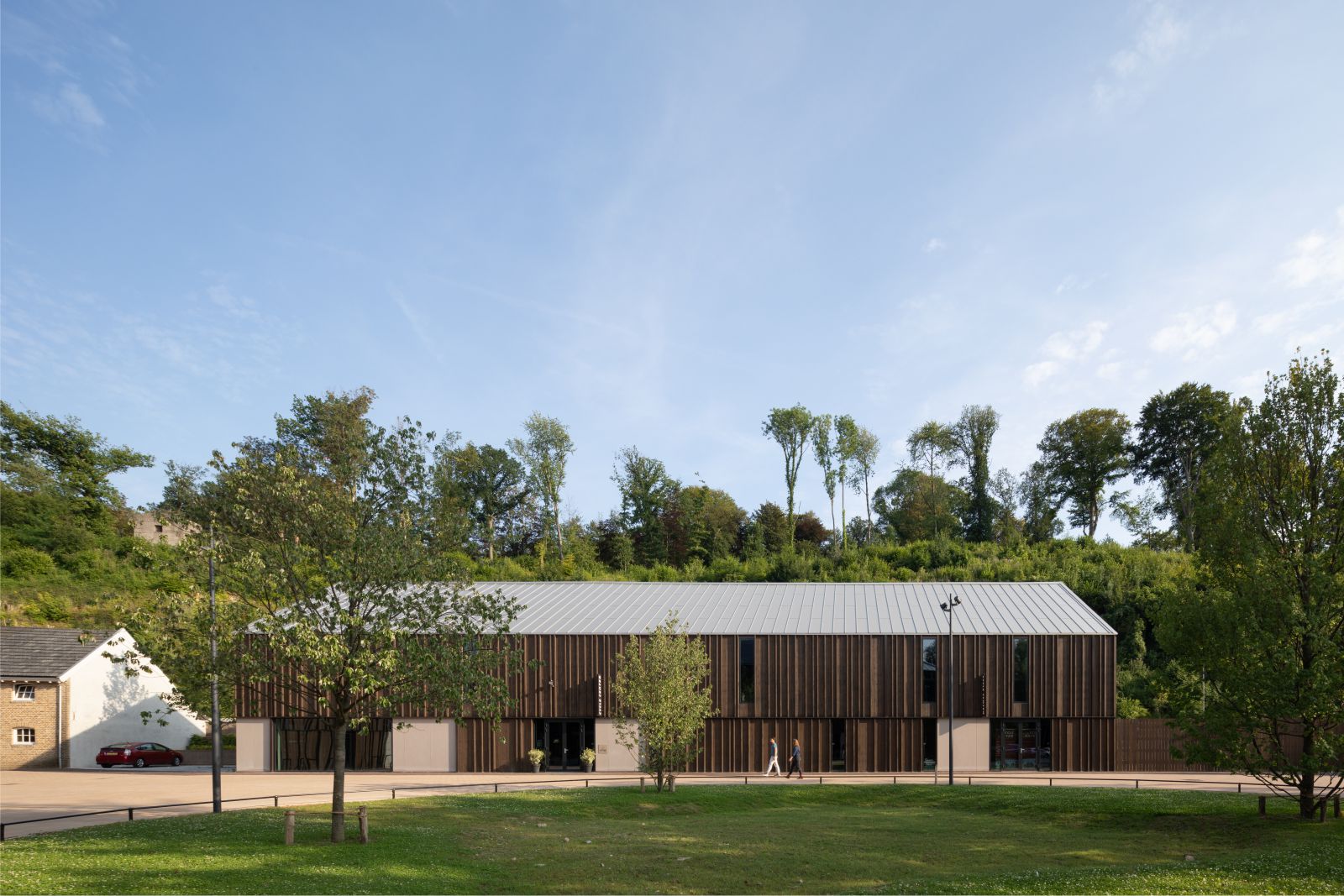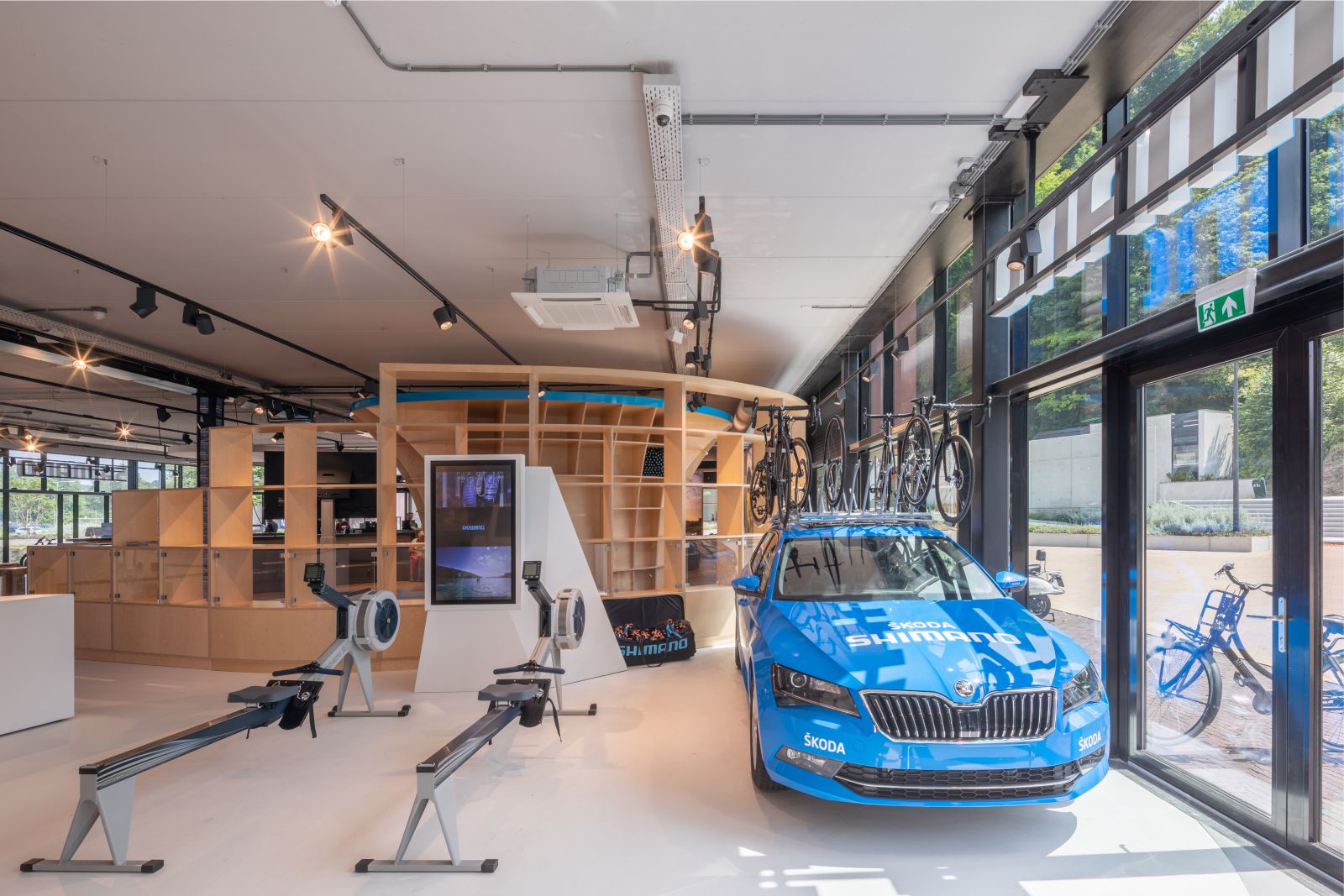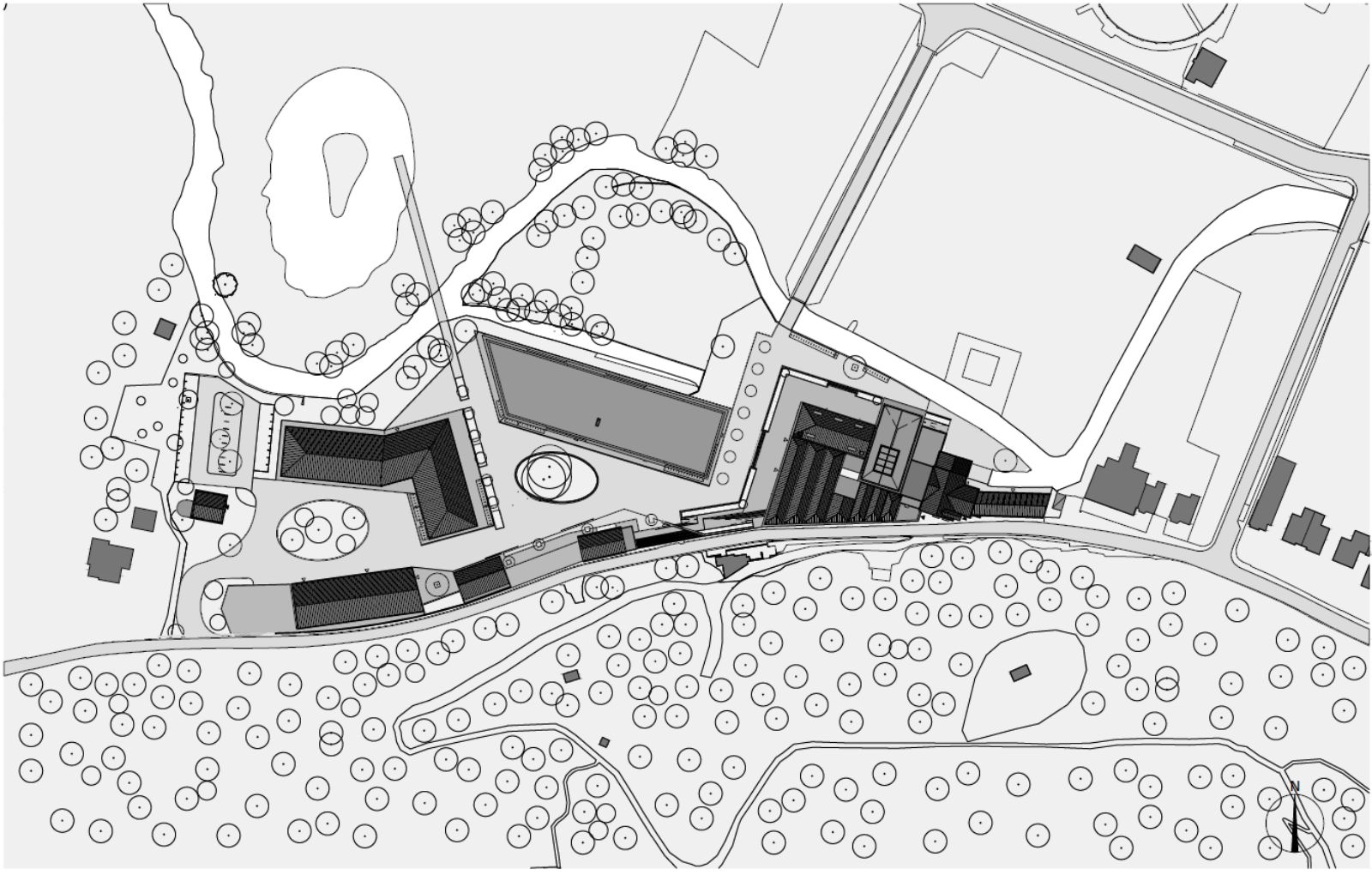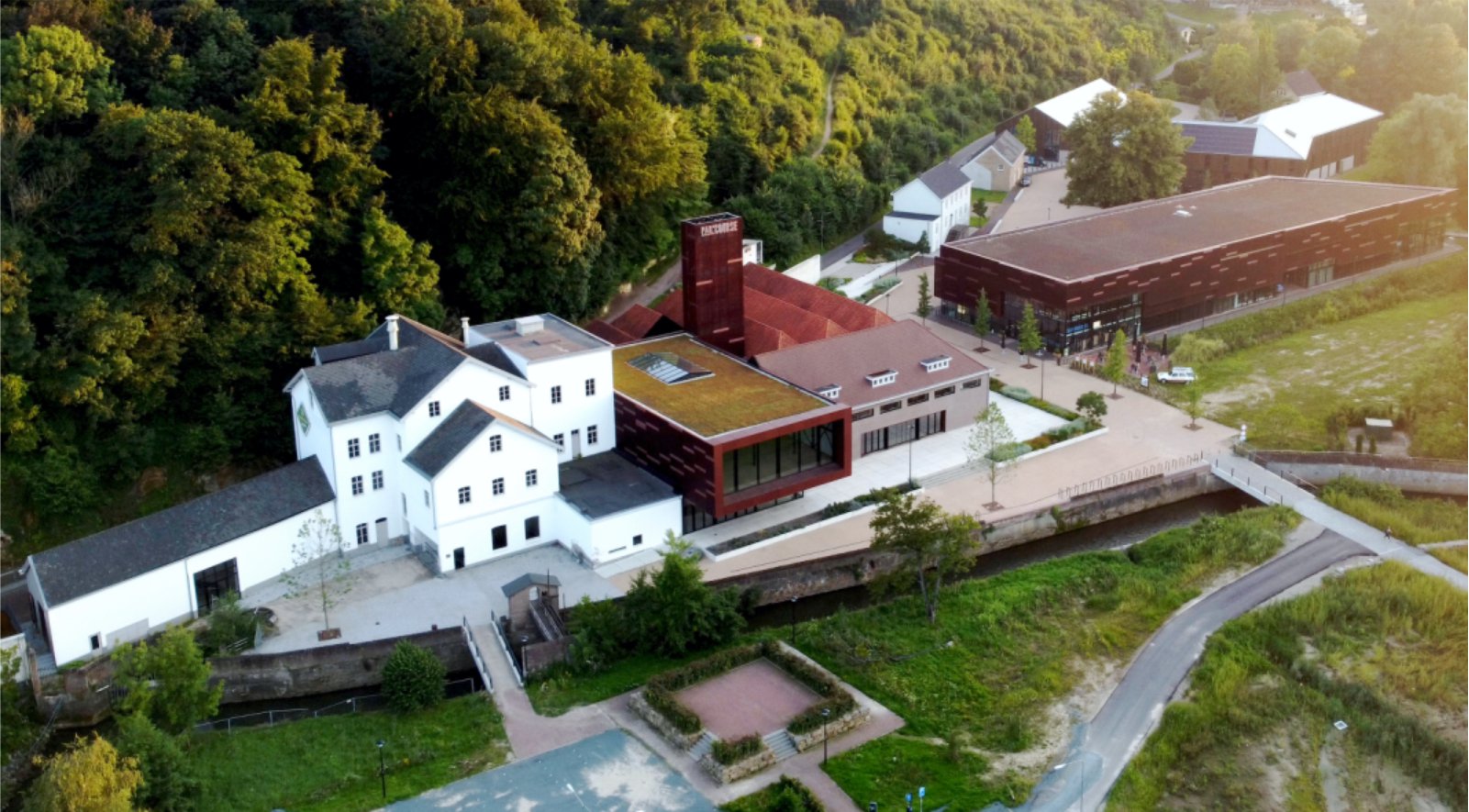An area with a history
The grounds of the old Leeuw brewery have a rich history going back to 1820. The water mill, now a national monument, was initially located at the Geul River to serve a factory which produced gunpowder. In 2005 the brewery left this location, taking the large silos with them a bit later. With the buildings’ various scars, the grounds remained neglected and decaying.
A place of potential
The redevelopment of the Leeuw grounds was an opportunity to strengthen the existing economy and culture of Valkenburg with a new concept in a unique location. Because of its position near the centre, at the bottom of the Cauberg Hill, the area is a natural junction between the cycling paths and hiking trails extending out from Valkenburg centre. Additionally, it is directly connected to the wandering Geul River, the open-air theatre, and the garden of the Holland Casino.
The concept
The concept for Par’Course is all about two core values: connection and experience. Because the area is connected to the rest of Valkenburg and the surrounding areas, visitors naturally run into Par’Course along their route. This resulted in two pillars for Par’Course: the Food Experience and the Cycle Experience. Two worlds of experience which are directly connected with cycling capital Valkenburg and Burgundian Limburg.
The urban design concept
By incorporating the functions in not just one building, but instead distributing them properly over various cubic contents, a nice interplay of buildings has been created. The public areas between the buildings can be used for activities and events, and they exhibit diversity of scale and atmosphere. MoederscheimMoonen won the architect selection with this plan, and the urban design plan was subsequently realised in close collaboration with various stakeholders.

The urban design character
Because of the Geul River and the surrounding buildings, the old Leeuw site had many encircling walls and boundaries, which made the setting feel confined. Several large halls around the original entrance to the factory grounds were demolished, which created new openings in the confined area. This enabled the spot to be connected to the surrounding nature, the urban fabric, and hiking trails and cycling paths.
The public area
The design of the outdoor space (Dolman Landscaping Group) is characterised by a patchwork of elements, making it a pleasant spot. Surrounding the historic brewery is a raised patio made of concrete elements and bordered by greenery. Further, a sand-coloured stone was chosen, which gives shape to the squares including oval green elements for trees and a lawn. Brick and greenery are used in the transition zones of various buildings to create intimacy around the immediate outdoor spaces.

Between the buildings, a combination of urban areas with squares, alleys and views has emerged. The Geul River is visible in different locations; there are various crossing spots to the landscape and near the different outdoor terraces surrounding the buildings. By now, the public area has already been able to host multiple events and exhibitions. As the starting and ending points for activities in the hills of Limburg, the public area has also become a genuine gathering spot for cyclists and hikers.
The brewery as landmark
An important place in the concept of Par’Course has been reserved for the brewery. The building which will house future restaurant and food concepts is the origin of the former factory grounds, with the national monument water mill as living proof of that. The outside of the historic brewery has been fully restored and its insignificant additions, incorporated throughout the years, have been removed. This brought the building back to its original core volume, which consists of the national monument water mill, the brewery areas, and various brick halls.

Between the brewery and the brick halls, the building has been expanded with a modern volume positioned on the concrete column heads of the removed silos. The façade of this new volume is related to the Shimano Experience Centre next door and is covered with rectangular sheets of russet-coloured anodized expanded aluminium. The varying sheet measurements give the façade the necessary differentiation and, in some spots, the orientation of the expanded aluminium alternates.
A recognisable difference in colour has been applied between the original white brewery and the brick halls. Here and there, focused cuts in the façade have been introduced to make the building suitable for hospitality and catering purposes. In the interior of the brewery, it has been decided to preserve the layered nature of its turbulent history to offer the hospitality concepts an industrial, lived-in shell as their canvas.
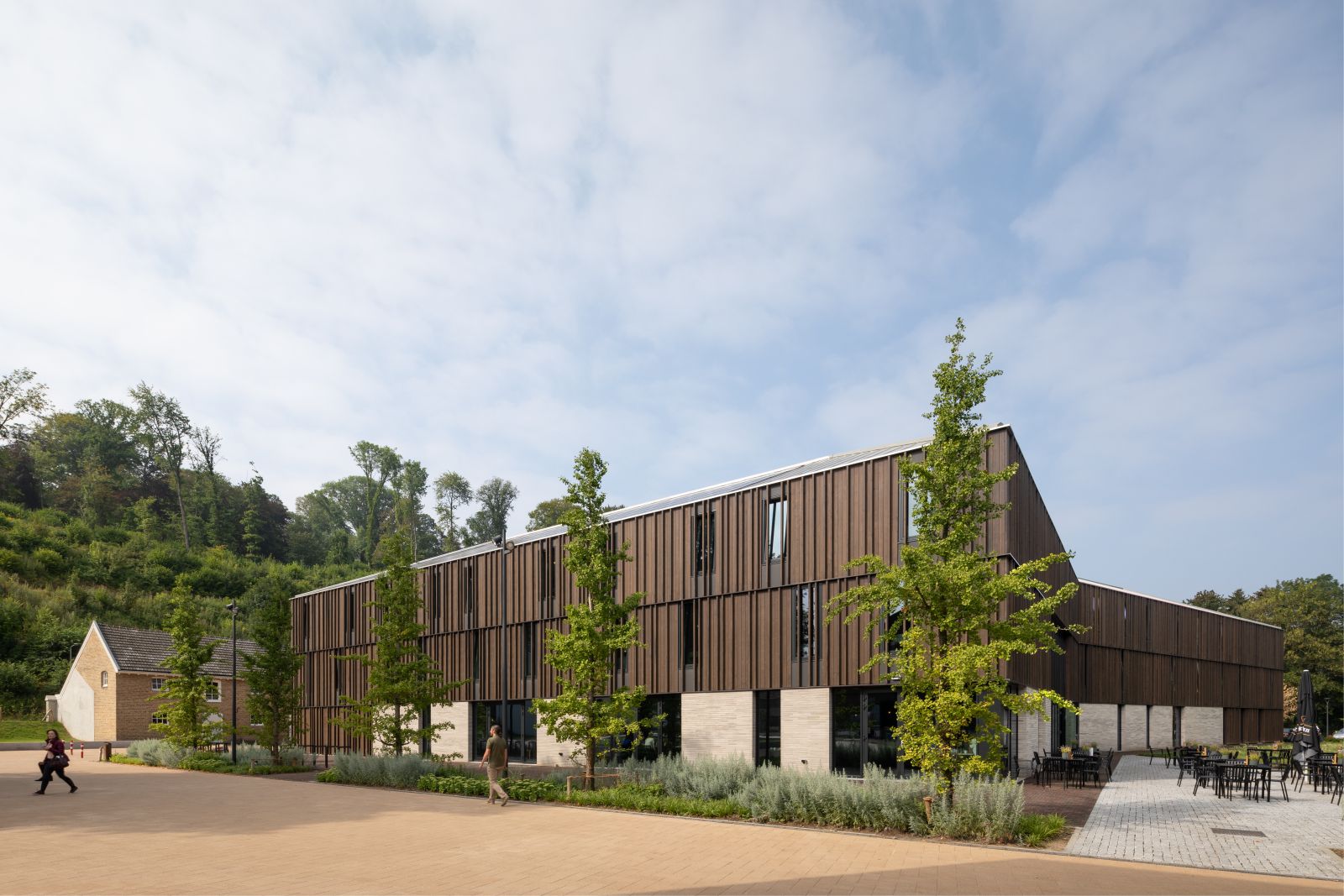
The Shimano Experience Centre
The Par’Course building which is situated most centrally is the Shimano Experience Centre. The Centre is the ultimate place for Shimano, where visitors can become familiar with the sports of cycling, angling and rowing. The conference room is used for business and cycling events. The building is the most modern one in the area and, in terms of materialisation, communicates with the expansion of the brewery. The façade is made of anodised expanded aluminium.
Brand experience is the focus of this building. In the straightforward shell is a lively and fresh interior which has been designed by Shimano to signify discovery and experience. The Experience Centre offers visitors the opportunity to try out Shimano’s products in the surrounding area — going fishing for a day in the fishing pond specially created for that purpose or cycling in the hilly surroundings. Here you are genuinely encouraged to experience these three outdoor sports.
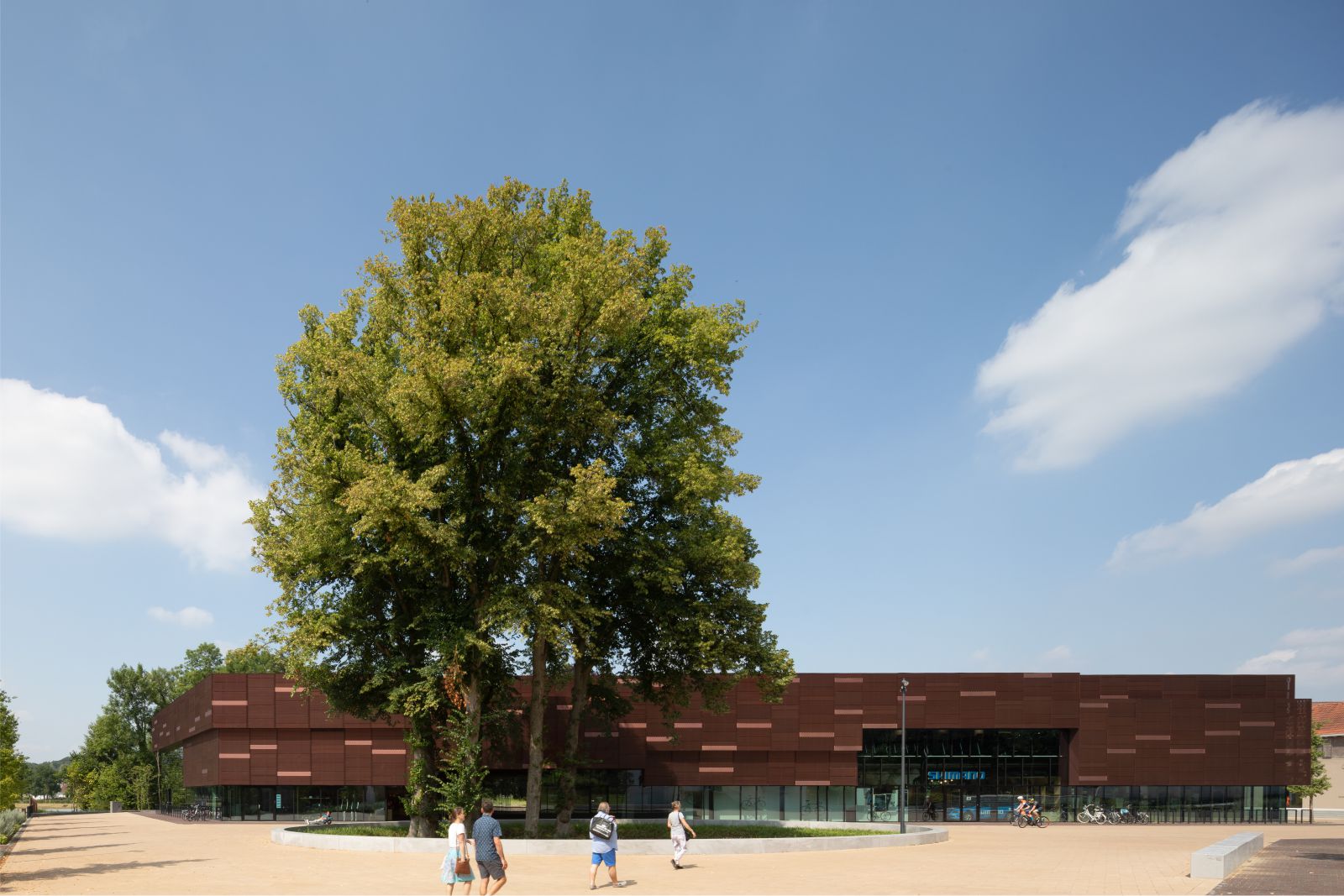
The Black Label Hotel and Cycle Centre bicycle rental
At the eastern-most part of Par’Course you’ll find the Black Label Hotel. The building follows the curve of the Geul River and, with its perpendicular angle, creates two squares: the main square and the hotel’s entrance square. From the conceptual idea, the building plays an important role in the fabric of urban design and has therefore been given a traditional main shape with a roof design. A finely designed wooden façade gives the building a modern presence.
Opposite the hotel is the building that houses the Cycle Centre, one of the largest mobility businesses in the region, which organises cycling events throughout Limburg. The building follows the hotel’s analogy. It is part of the encircling walls of the grounds and, through the materialisation, is recognisable as a new element in the whole. Together with the hotel and an old villa, it forms a welcoming entrance square. Source by MoederscheimMoonen.
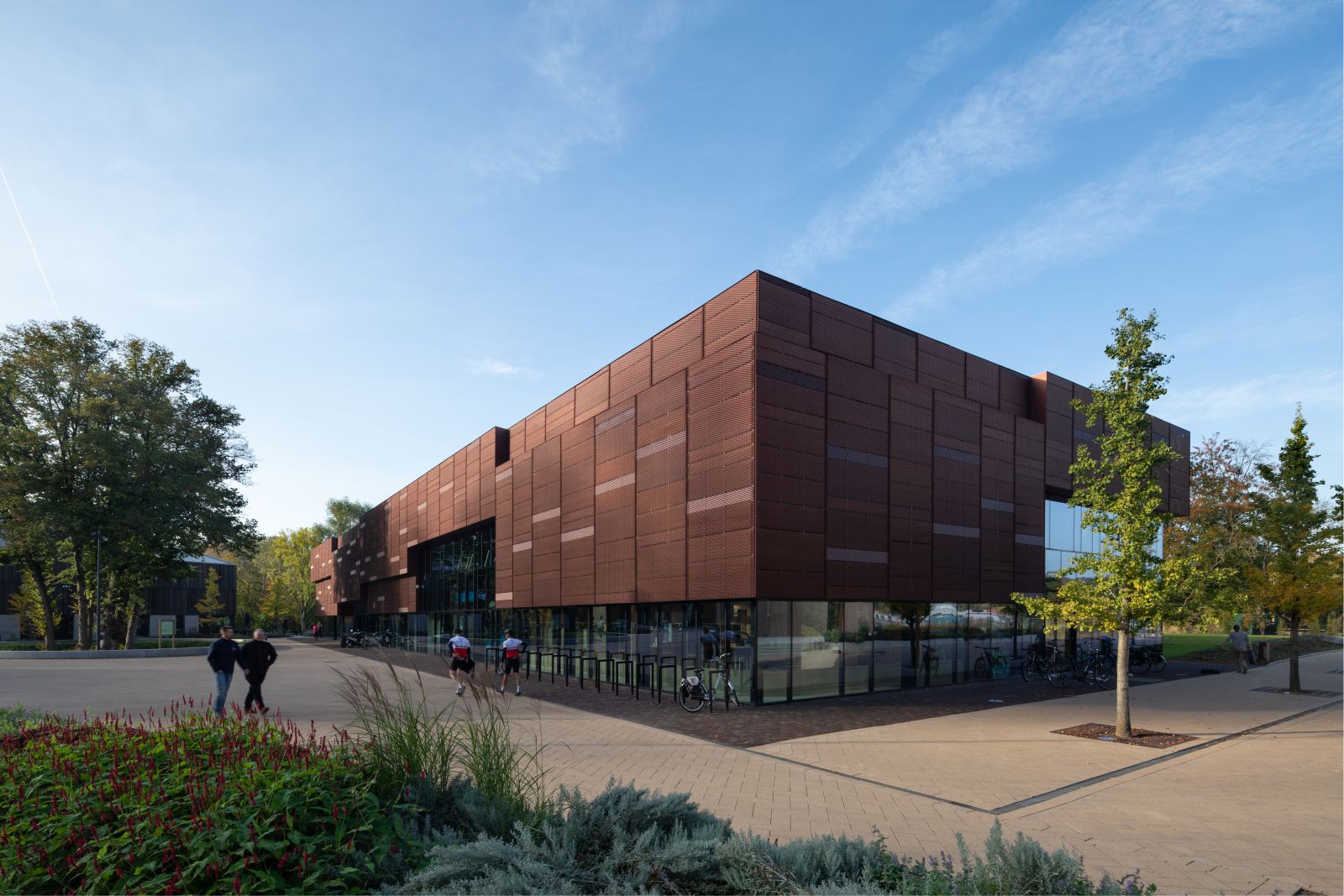
- Location: Valkenburg, Netherlands
- Architect: MoederscheimMoonen
- Landscape architect: Dolmans Landscaping Group & Jacques van Leuken
- Structural engineer: Palte B.V.
- Installation consultant: Deerns B.V.
- Construction: Jongen Bouwpartners, Derckx, Bouwbedrijf Peeters & Pluminfra BV
- Client: Wyckerveste Adviseurs
- Gross Floor Area: 15,000 m2
- Year: 2020
- Photographs: Bart van Hoek, Courtesy of MoederscheimMoonen






